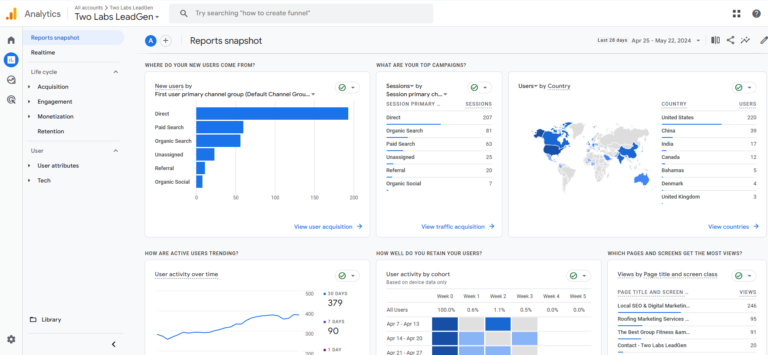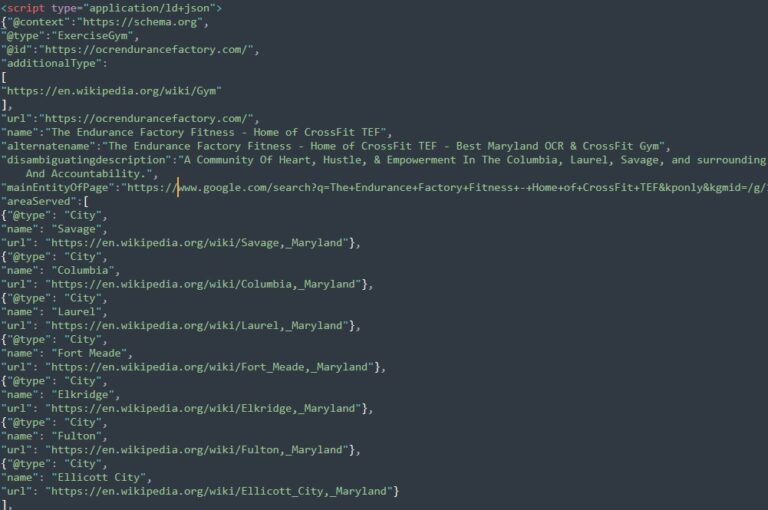Table of Contents
ToggleHolistic SEO expands the keyword research process beyond mere volume, placing importance on the broader context of user intent and search behavior. This comprehensive guide seeks to shed light on the intricacies of holistic SEO keyword research, offering strategic insights into how understanding semantic fields, related entities, and the subtle nuances of keywords can enhance your content’s alignment with user needs. As we navigate the complexities of this novel approach, the potential for improved search engine rankings beckons.

Key Takeaways
- Holistic SEO takes into account all aspects of digital marketing, including keyword placement, website design, content quality, and social media engagement.
- Keyword research is essential for shaping an effective digital marketing strategy, as it uncovers the specific terms used by potential customers and enhances website visibility.
- Identifying relevant entities and analyzing competitor keywords help in understanding the industry landscape, finding gaps in your own strategy, and discovering new opportunities.
- Balancing short and long-tail keywords is crucial for SEO optimization, as short-tail keywords attract high traffic but lower conversion rates, while long-tail keywords attract a targeted audience with higher conversion rates.
Understanding Holistic SEO
Understanding Holistic SEO, a comprehensive approach to search engine optimization, encapsulates the interconnectedness of all elements in the digital marketing spectrum, from keyword research to website design, content creation, and social media strategy. This strategy is rooted in the understanding that every aspect of your online presence can influence search engine rankings and user experience.
To master holistic SEO, one must consider not only the strategic placement of keywords but also the overall design and navigability of the website, the quality and relevance of the content, and the brand’s social media presence and engagement. In essence, it’s about creating a seamless, integrated experience for both search engines and users.
This approach necessitates a deep understanding of your audience, their search habits, and their needs. It involves analyzing keyword trends and user behavior, designing a user-friendly website, creating informative and engaging content, and developing a robust social media strategy.
The end goal is to create a digital presence that is not only optimized for search engines but also delivers value to the user, thereby improving both visibility and conversion rates. This strategic, comprehensive, and user-centric approach is what sets holistic SEO apart.
What is the Importance of Keyword Research?
Keyword research serves as the bedrock of SEO, steering the direction of content creation, site architecture, and user experience. This process uncovers the specific terminologies that potential customers use when conducting online searches, providing invaluable insights into their needs, preferences, and behaviors.
The strategic selection of keywords can significantly enhance a website’s visibility, driving targeted traffic, and thereby increasing conversion rates. Effectively, it bridges the gap between businesses and their target audiences, ensuring that digital content resonates with the market’s search intent.
Moreover, keyword research aids in competitive analysis, revealing the keywords that competitors are ranking for, and identifying potential opportunities to outperform them. By understanding the competitive keyword landscape, businesses can devise a more informed, data-driven strategy, enhancing their chances of achieving their digital marketing objectives.
In essence, the importance of keyword research in holistic SEO cannot be overstated. It is an indispensable component that underpins the success of digital marketing campaigns.
How do you Identify Relevant Entities?
Entities, represented by keywords, related concepts, or brands, help to fine-tune your SEO strategy by revealing the existing competition and potential opportunities for growth within your niche.
To identify these entities, you need a discerning understanding of semantics and linguistics, focusing on the primary facets that determine their relevance. This involves analyzing industry standards and measurements, examining product brands and categories, and evaluating the related entities, among other factors.
An understanding of morphology, the study of words and their relationship to other words in the same language, is crucial here. This knowledge can help uncover new keyword opportunities by identifying semantic fields or groups of words related to the same subject.
Moreover, it’s essential to recognize the unique attributes of these entities, which can be industry-specific or universal, to deliver a value proposition through your content. Remember, the goal is not merely to repeat information but to provide coherent, accurate, and statistically backed data that adds value to your audience.
Analyzing Competitor Keywords
This analysis provides a wealth of information that can help you understand how your competitors are positioning themselves in the digital landscape, what keywords they are targeting, and how they are achieving their objectives.
The process starts with identifying your competitors. This could be companies that offer similar products or services, or those that rank higher for your target keywords. Once identified, use SEO tools to extract their keyword data. This includes the keywords they rank for, their ranking position, and the search volume these keywords generate.
Analyzing this data enables you to find gaps in your own strategy and discover new opportunities. It provides insights into the keywords that are driving traffic to your competitors’ websites and those that are underutilized in your own strategy. Bear in mind, it’s not about copying your competitors, but learning from their successes and failures to craft a more effective and holistic SEO strategy.
Using Keyword Research Tools
Keyword research tools can give you a competitive edge by providing valuable data, such as search volume, keyword difficulty, and related keywords that you might not have considered.
The following are some essential considerations when using keyword research tools:
- Selecting the right tool:
- Google Keyword Planner is the go-to tool for many SEOs because of its comprehensive data directly from Google.
- Other tools like SEMRush and Ahrefs also offer robust keyword research features along with other SEO functionalities.
- Understanding the metrics:
- Search volume indicates the popularity of a keyword.
- Keyword difficulty suggests how hard it would be to rank for a particular keyword.
- Using the data strategically:
- Use the data to find low-competition keywords with high search volume.
- Use related keyword suggestions to expand your keyword list and find new content ideas.
Mastering these tools and their use can provide a significant advantage in your SEO efforts, allowing you to craft a keyword strategy that drives traffic and conversions.
Balancing Short and Long-Tail Keywords
Short-tail keywords are broad search terms that often generate a high volume of traffic, but with a lower conversion rate. On the other hand, long-tail keywords are specific phrases that attract a smaller, more targeted audience, leading to a higher conversion rate.
Balancing these two types of keywords requires a keen understanding of your target audience and the objectives of your website. It is essential to use a mix of both to create a comprehensive and effective SEO strategy.
| Short-Tail Keywords | Long-Tail Keywords |
|---|---|
| Broad and generic | Specific and targeted |
| High traffic, low conversion | Low traffic, high conversion |
| Competitive and difficult to rank | Less competitive, easier to rank |
What is the Role of Semantic Entities?
Semantic entities, which are the meaningful components of your content, help search engines understand the relevance and quality of your content in relation to specific search queries.
Implementing semantic entities into your SEO strategy requires a thoughtful and systematic approach. It involves the following steps:
- Understanding the importance of semantic entities:
- They provide a more precise interpretation of keywords
- They improve the relevance of your content
- They enhance the visibility of your website on search engines
- Identifying the correct semantic entities for your content:
- Research and determine the most relevant entities
- Align these entities with your business objectives
- Incorporate them naturally into your content
- Monitoring and optimizing the performance of semantic entities:
- Use analytics tools to track their performance
- Regularly update your content to maintain its relevance
- Adjust your strategy based on the changing search algorithms and user behavior
How to Use Entities and Keywords in On-Page Optimization
Entities are distinguishable units in SEO that Google recognizes and uses to understand the context and relationships between different elements of content. Keywords, on the other hand, are specific phrases that users type into search engines to find relevant information.

Incorporating these elements skillfully into on-page optimization involves a deep understanding of not only what your audience is searching for, but also how search engines interpret and relate these elements. Here’s how you can effectively use entities and keywords:
| Entities | Keywords |
|---|---|
| Use in meta descriptions, title tags, and headers | Use strategically in content, URLs, meta descriptions |
| Use to provide context and relevance | Use to match user search intent |
| Use to build relationships and connections | Use to drive targeted traffic |
How to Use Entities and Keywords in Off-page Optimization
Moving beyond the confines of your website, employing entities and keywords in off-page optimization plays a pivotal role in enhancing your online presence and relevance in search engine rankings. This process involves a strategic use of these elements in various off-site platforms and channels.
There are three key strategies to take into consideration:
- Link Building
- Acquire high-quality, relevant backlinks to your site
- Make sure your keywords are present in the anchor text
- Use entities relevant to your content in the linked pages
- Social Media Optimization
- Use keywords and entities strategically in your social media profiles and posts
- Engage with your audience around these topics to boost visibility
- Content Marketing
- Create high-quality content around your keywords and entities
- Distribute this content on various platforms to increase its reach
Analyzing SERP Performance
SERP performance analysis is a strategic approach that involves a deep understanding of your website’s position in search results and the factors influencing its visibility.
To effectively analyze SERP performance, you need to identify and track key metrics, such as click-through rate (CTR), average position, and impressions. These provide insight into your website’s ranking performance, user engagement, and visibility, respectively. For instance, a high CTR but low average position could suggest that while your site attracts clicks, it may not be ranking high enough on the SERPs, potentially due to competitive keywords.
Moreover, consider the user intent behind your targeted keywords. A mismatch between your content and the user’s search intent can adversely affect your SERP performance. Finally, assess the quality of your content. High-quality, relevant content can significantly improve your SERP performance by satisfying both user intent and search engine algorithms. Therefore, continuous monitoring and analysis of your SERP performance are integral to optimized SEO strategies.
Conclusion
Holistic SEO keyword research is a comprehensive strategy that encompasses understanding user intent, competitor keywords, and relevant entities. It leverages semantic entities to optimize on-page and off-page elements, ultimately enhancing SERP performance. This approach allows for the creation of content that aligns with users’ needs and expectations, thereby improving website visibility and ranking in a competitive digital environment.












